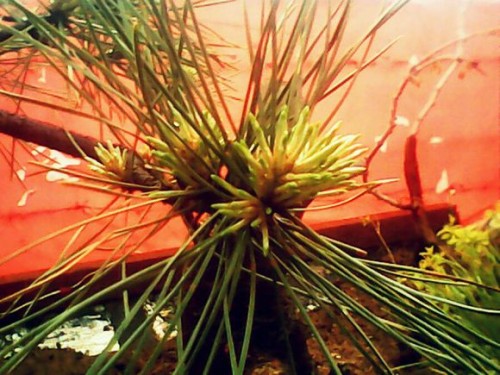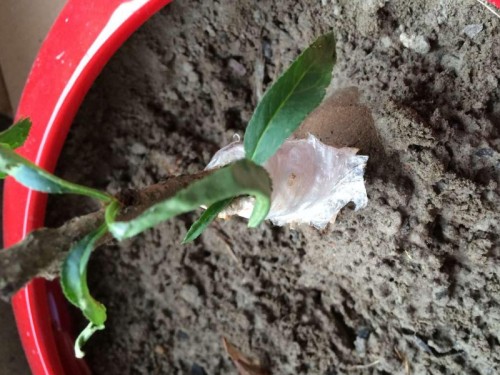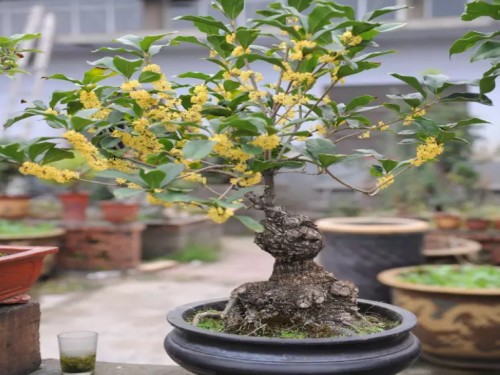Production method of Pinus tabulaeformis bonsai
Pinus tabulaeformis tall and straight, evergreen, long life, not afraid of wind, snow and cold, people regard it as a symbol of unyielding and longevity. The posture of Pinus tabulaeformis is ever-changing, and the older it is, the more strange it is, so it is an ideal material for making bonsai. After Pinus tabulaeformis is planted, it can be watered twice in a week. After that, the soil can be loosened and the soil moisture can be preserved. It can be watered again in early May. After the weather is not dry, fertilizer can be applied once in June and ferrous sulfate once in August. Dig a hole at the edge of the plant. In loosening soil and weeding, can be carried out once every 20 days, requiring serious and meticulous, generally up to 4 to 5 cm deep, requiring hoing evenly, loose soil without bumpy, grass hoe clean, pick clean.
1. Excavation of tree stump:
There are many hills and mountains in Shandong Province, and Pinus tabulaeformis is widely distributed. Mount Tai, Mount Laoshan and Mount Culai all have ideal pine pile materials. "old man trees" that can not grow into wood or stumps destroyed by animals and humans in the forest region have short plants, dense branches, shorter internodes, smaller needles and graceful posture, which can be excavated in the dormant stage of trees in spring or early winter. The root system of Pinus tabulaeformis is well developed, both vertical and horizontal roots grow well. In accordance with the principle of "cutting off the main root to protect the lateral root and fibrous root, and cutting the vertical root to protect the horizontal root", we should first cut off the excess root system with a sharp knife so that the size and length of the root system are compatible with the size of the basin. The crown can be roughed on the spot, and the branches that do not affect the composition should be cut off or truncated. Pinus tabulaeformis transplantation should bring soil balls, in cliffs, ridges and other places where soil balls can not be carried, they can be packed in bundles after beating mud.

2. Review the tree and set the pattern:
It is necessary to take the shape of the trunk as the basis, from the base, root, trunk, auxiliary trunk, side branches, etc., before and after, left and right, up and down repeatedly observe, carefully examine, conceive the situation of tree stump bonsai, determine the branches that need to be retained and reformed. You can also draw sketches and design all kinds of schemata that may be formed. For example, if the trunk is divided into two trunks above the same base, or if the two plants can be planted together, the Shuanyu stump can be shaped, requiring the two trunks to be distinct in primary and secondary, with primary and secondary collar and secondary lining. If the pine trunk is drooping and extends into a subduction potential, it can cultivate cliff stumps if the trunk is straight and hierarchical. If the trunk is tilted to one side, it can be cultivated. The crown forms the potential of Qiu branches, which can be used to cultivate Dendrobium stem.
3. Trimming and shaping:
After determining the shape of the stump, it is necessary to look at the overall situation and make overall arrangements according to the design requirements. According to the principle of pruning the main branch before pruning, rough cutting and then fine pruning, the suitable branches are determined from the spatial structure, and then all the other branches are cut off. Generally, the useless branches and leaves are removed first and the branches are exposed in order to observe the tree situation in an all-round way. For parallel branches, bore branches, overgrown branches, repeated branches, tillering branches and diseased and residual branches, they should be cut off from the base, and for the stiff branches with better position, they can be cut short from the branches to regenerate new branches. The reservation of lateral branches should be taken care of in all directions. It is necessary to take the trunk as the center, retain the good branches, and make them have the potential of being sparse and become a natural form. At the same time, we should also consider the room for growth and development in the future.
4. Processing and plastic surgery:
Shaping and pruning is a necessary management technology to ensure that the tree shape of Pinus tabulaeformis is beautiful, neat and consistent, grows well, and does not affect the construction of public welfare facilities in the city and people's life. What measures should be taken depends on the specific purpose of greening place, location, occupied space and artistic modeling. In general, it is inseparable from the removal of redundant branches, disease and insect branches, and the removal of prosperous and long branches with inappropriate growth direction. Generally speaking, the tower-shaped tree attribute of Pinus tabulaeformis is appropriate to ensure that the top advantage of the central leader trunk is low, and the techniques such as pulling branches and coring should be adopted to shape the technological branches.
Tree stump bonsai must be assisted by artificial shaping on the basis of nature to highlight its characteristics and improve its ornamental value.
(1) thinning of overdense branches
(2) retract excessively long branches
(3) supplement the missing branches of partial crown.
In the process of management, Pinus tabulaeformis needs to pay attention to shaping and head-changing work. In the process of growth, some heavy branches and heads will be damaged or in a weak position, which must be pulled up and tied up with strong side techniques, which will later become the central advantage. This process is to change heads.
5. Fertilizer and water management
It is an important measure to ensure the normal growth of plants and to resist diseases and insect pests. In the one year after the survival of the transplantation, it was watered every 2 months on average in the growing season. When fertilizing, the plants with a height of less than 3.5m should be fertilized on a plate and fertilized twice a year, and the fertilizer supply was better after soil thawing in early spring, spring shoot flourishing period and autumn shoot growth period, and the above fertilization methods could be adopted for plants above 3.5m in 1-2 years after survival. after that, it is more appropriate to apply fertilizer outside the root, and the fertilization tool can be sprayed once a month in the growing season.
6. Pest control
The prevention and control of diseases and insect pests of Pinus tabulaeformis should follow the principle of "timely discovery, active prevention and control". After the diseases and insect pests are found in the growing season, the prevention and control of diseases and insect pests should be organized in time. In winter, the trunk should be coated with white or stone-spraying sulfur mixture to eliminate the trunk worm eggs and pupae.
Time: 2019-05-26 Click:
- Prev

Peach bonsai quick method
A pot of red flowers in the peach bonsai is in full bloom in spring, red if fragrant beads, can if Caixia, dotted with the home, conveying the meaning of spring. Send leaders, bosses, wish grand plans exhibition; send elders, send old people, wish health and longevity; send boys, send girls, wish love a bumper harvest; send relatives, send friends, wish good luck often
- Next

Fraxinus chinensis Grafted Osmanthus fragrans Bonsai
Osmanthus fragrans has luxuriant foliage, evergreen, intertwined roots, beautiful posture, gorgeous flowers and fruits, fragrant flowers, strong germination, pruning resistance, long life and other biological characteristics. It is a good tree species for processing and making bonsai trees. The production process of osmanthus bonsai is complicated, natural and wonderful.
Related
- Fuxing push coffee new agricultural production and marketing class: lack of small-scale processing plants
- Jujube rice field leisure farm deep ploughing Yilan for five years to create a space for organic food and play
- Nongyu Farm-A trial of organic papaya for brave women with advanced technology
- Four points for attention in the prevention and control of diseases and insect pests of edible fungi
- How to add nutrient solution to Edible Fungi
- Is there any good way to control edible fungus mites?
- Open Inoculation Technology of Edible Fungi
- Is there any clever way to use fertilizer for edible fungus in winter?
- What agents are used to kill the pathogens of edible fungi in the mushroom shed?
- Rapid drying of Edible Fungi

